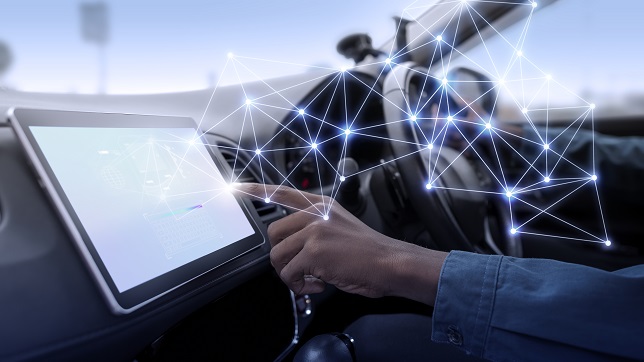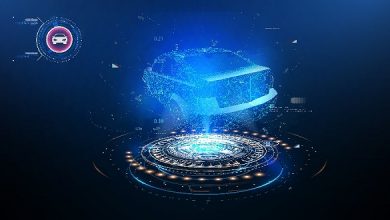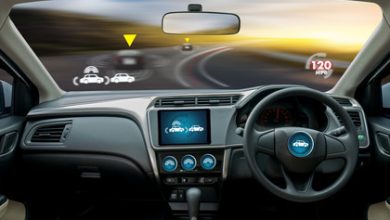Autonomous Vehicle, the next big thing in Telematics

From Da Vinci’s self-propelled cart to Tesla’s autopilot and Google’s self-driven car, the history of autonomous vehicles can be traced back to the 16th century from Da Vinci’s time. The invention of the Whitehead Torpedo in 1868 was a significant step towards automation technology. The DARPA undertaken by the US Department of Defense in 2004 also saw a significant leap in driverless capabilities. Then came the autopilot technology followed by cruise control in cars. The advent of drone technology also changed the view of the world where vehicles could completely be navigated by pre-written codes and advanced AI. With Google, Tesla and other AV enthusiasts, the game changed as the world got its first autopilot car hands-free control of the car on highways and freeways.
Today amongst the most exciting technology prospects that humans are working on, autonomous vehicles (AV), or self-driven cars, is the future of the transportation industry. These driverless cars have the ability to sense its surroundings through embedded sensors in its system. Instead of a driver-led response, the vehicle utilizes its in-built software to navigate through roads. Although this holds a glorious promise for a future that immensely enhances human safety against car crashes, it still has certain drawbacks, even among the most forward-looking critics.
Whether we will be able to overcome the technology barriers like the advanced level of AI and machine learning required to successfully implement this technology is another question, but what is certain is that we are slowly, but surely reaching the Level 5 of automation.
Automation Levels
Automation can be defined as creation and application of technology that can perform tasks with minimal human intervention. And the ultimate goal of every automation technology: industrial application to source its benefits down to the common man.
There are six levels of autonomous cars, based on the ascending value of automation technology that can function on their own. Level 0 is the lowest level of automation, while Level 5 is the highest.
| Level 0 | It’s the lowest level of automation where all the control rests on the human driver. |
| Level 1 | Driver assistance helps the driver with steering and braking of the car. |
| Level 2 | Automation helps in steering, braking and acceleration in certain pre-defined environments, although the human driver still has to monitor some functions and perform tasks. |
| Level 3 | Automation performs the majority of the driving under ideal environments, but the driver still may have to take manual control when prompted by the system. |
| Level 4 | The vehicle’s Advanced Driving System performs independently all predefined tasks without any human intervention. |
| Level 5 | Automation enables the autonomous vehicle to function completely on its own under any environment. This would enable the car to drive under any environment without the need of human monitoring or control. Level 5 autonomous cars can communicate with other cars, traffic lights, signage and roads. |
We currently are sitting at Level 2 of automation with Level 3 capabilities being developed at a rapid pace, with a deployment forecast in about the next 5 years on an industrial scale.
What the technology holds
Autonomous vehicles have several advantages over human driven cars. These vehicles provide safety and could substantially decrease the number of casualties due to road accidents. They may also lead to better traffic management on the road and reduce congestion. Driverless taxis also have a potential to reduce transportation cost. Additional advantages include safe passenger rides for people with disability and less fatigue during overnight journeys.
One of the biggest challenge autonomous vehicles faces is, unless and until advanced systems take hold, the technology may end up causing damage to the vehicle as it would be programmed to protect the humans at all cost. Also, there has to be a well-drafted set of rules that would assist the AI for better decision-making, like prioritizing passenger life or pedestrians, if such a situation may arise.
5G, Telematics and AV
In the past decades, we have witnessed the substantial upgrades in cellular networks, i.e., from 2G to 3G, 4G and now, 5G. With the introduction of 5G infrastructure, the transmission and processing of data between IoT-enabled devices is set to increase. This upheaval in Telematics will have a trickledown effect on the development of AV.
5G internet speed will assist in real-time vehicle-to-vehicle and vehicle-to-infrastructure communications which will reflect the data back to the driver about traffic congestion, street lights, estimated arrival time, construction/maintenance hazards, etc.
AVs will be a major benefactor with such data communications between machines, making operations easier. 5G technology will significantly enhance safety in AVs with technology taking over the wheels which in turn would eradicate human error.
AV: Value Creation
With the advent of AVs in the public transportation and logistics sector, the paradigm would shift considerably as this technology eliminates the impediments to commercial vehicles. From less congestion to higher utilization of assets and enhanced productivity, the value creation aspect of AVs is quite high.
With real-time data consisting of travel time, road incidents and favorable traffic patterns, the AVs can take the best possible route which would curb traffic density on roads. In a developing country like India, the consequences of such shared Autonomous Vehicles (SAV) can be profound. We can already see the results with the metro rail projects which are now being introduced even in Tier II cities to curb congestion.
SAVs will surely bring down the cost of transportation due to driverless cabs which can ferry multiple passengers at once. This is akin to the car-sharing model that is thriving today and without the need for a driver and their skills. With most of the AVs being electric cars, the presence and wide scale implementation of SAV will also put less pressure on the environment due to no fossil fuels being used and less vehicles on road.
Challenges
There are still some elementary challenges that need fixing before Level 5 AV becomes our reality on roads.
- Hardware Challenges
The hardware requirements for Autonomous Vehicles primarily involve sensors of different kinds. Some of them are currently in application, while some are yet to be deployed on a large-scale. These sensors would help the AV to detect objects around it and interact with the environment. Cameras can be installed to view while LIDAR lasers measure the distance between the object and the vehicle. The LIDAR also measures the speed and direction that object is traveling in.
These sensors have to be sensitive enough to relay the correct data to the AV’s computer control system for decision-making.
Also, in terms of mechanical engineering, the car has to be built in a way where it is subjected through all environments for driving safety and also which can withstand the elements while being parked. In the automobile industry, this is referred to as an ‘automotive upgrade’ of all autonomous vehicles.
A key point was raised by Mr. Chris Brewer, Ford’s Chief Program Engineer for autonomous vehicle development, in which he outlined the need for the vehicle’s steering control systems to rely on mechanical steering over power-steering, the latter being susceptible to power failures. And without any physical wheels, this becomes a tricky proposition. With a hidden drive control system, there still has some ground to cover to build the vehicle in mechanical redundancy in a way where the vehicle can be controlled even if power runs out.
- AI & Machine Learning
AV technology uses AI and machine learning for processing the data that is relayed from the sensors. This data is then classified based on the metadata fed into the systems as algorithms. The system will then make a decision, whether to steer, brake or accelerate.
Currently, there is no metadata, no method to or even a basis to guarantee complete safety through machine-learning algorithms. There are no ideals behind testing, training or validating such advanced technology.
The Fail-system design is another challenge, as two independent subsystems are required to ensure that one takes over if the other one fails.
- Regulatory challenges
The need of a regulatory framework is pivotal for the development and deployment of CAV technologies. With driverless cars, there is a shift of liability from drivers to car makers regarding accountability in case of any mishaps.
All major consumer concerns have to be considered before actual deployment of Level 5 automation technologies on the road.
- Ethical challenges
As per a 2017 report by the German Ethics Commission, ” In the event of unavoidable accident situations, any distinction based on personal features (age, gender, physical/mental constitution) is strictly prohibited. It is also prohibited to offset victims against one another. General programming to reduce the number of personal injuries may be justifiable”.
But, due to the immense complexity of on-road situations, autonomous cars may face situations where they need to make a choice between putting the lives of the passengers at risk or saving a pedestrian. Even with the presence of regulatory frameworks, this can be a daunting task due to the moral characteristics of individuals.
The future of autonomous cars depends on overcoming this challenge, which can only be done with the consent of all stakeholders after thorough analysis on the benefit and risk of each decision made in this regard.
Role of ADAS
Advanced Driver Assistance Systems, or ADAS, supports the driver and enhances the vehicle & road safety. ADAS integrates the data sent by sensors along with a human-machine interface to detect obstacles or an error by the driver and improves safety of the car. It alerts the driver as to obstacles, takes precautionary measures and in some cases, limited control of the car.
Cruise control, traffic warnings, parking assistance, lane centering, satellite navigation are common functions of ADAS.
At each level of automation, ADAS is designed to function more independently as you reach the highest automation level:
| Level 1 | The driver has to make the most decision with one functionality taken over by ADAS (emergency brake assist, adaptive cruise control, lane keeping, etc.) |
| Level 2 | Multiple functionalities operated by ADAS with the driver still in control (highway assist, autonomous parking) |
| Level 3 | This is called conditional driving automation where a system can make informed choices based on sensor data and function on its own, though it would still require a manual override from a human driver. |
| Level 4 | Minimum human interaction, ADAS responds to driver error or system failure |
| Level 5 | Complete control of the vehicle without any human intervention |
Common ADAS sensors include:
- Cameras for imagery
- LIDAR, ultrasonic sensors to measure objects and their distances
- GPS for positional data
- Night vision systems
- Inertial measurement units to detect speed and acceleration data
The AV industry today
Several tech companies are joining hands with automobile giants to become first in the race of fully automated vehicles.
Chinese start-up Baidu has collaborated with the likes of BMW, Ford and other Chinese carmakers and is currently testing autonomous flights without human involvement in Beijing and California. The Apollo System, which is its ADAS mechanism, consists of camera sensors, LIDAR and Radar along with a cellular vehicle-to-everything communication system.
Another company worth its weight here is NVIDIA, a leading autonomous hardware and software company. Its ADS software stack is complete with driving policy, signal processing, perception and other control elements. Among its reputed clientele is Daimer, the parent company of Mercedes-Benz.
Waymo, the offering by Google, is a step beyond everyone else as it tested its first ride-sharing vehicle in Arizona without a manual operator. Volvo currently uses Waymo’s services to use in their Level 4 autonomous vehicles.
How does the future look?
The future of autonomous vehicles looks bright on the horizon, though certain key challenges still need to be addressed. From ethical problems to the large amount of dataset needed to equip the AI with decision-making, the road to fully autonomous technology is still far.
However, as more Tech giants like Google jump into this market, and the collaboration between such private companies, government and experts, self-driven cars will soon become a reality in our lives with limitless potential.
Author:

Praveen Dhusia
Business Development Manager
Teltonika India
Indian Institute of Management Alumnus with 8+ Years of Experience, Electrical and Electronics Engineer, having expertise in IoT solutions. Associated with landmark projects like Buddha International F1 Circuit, Redevelopment of Connaught place, IGI Airport Terminal 3 (MEP) etc. In his free time, he along with his friends tries to give back to the society by helping underprivileged young kids with their education.
Published in Telematics Wire



